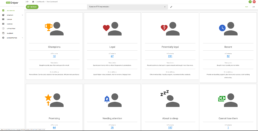RFM Segmentation
I frequently receive question regarding RFM modeling and the how exactly micro-segments are built. Unfortunately there are no public sites that I felt are comprehensive and that I would feel comfortable pointing to. Therefore I made this blog for the interested reader.
What is RFM Segmentation?
RFM is a proven marketing model that is used to segment and analyse customers based on their behavior. RFM Segments are used to create relevant communication and to achieve higher response rates.
What does RFM stand for?
RFM stands for the 3 behavioral dimensions by which customer are categorized:
- Recency: How recent did the customer make his last purchase
- Frequency: How often did the customer make a purchase
- Monetary Value: How much in total did the customer spent
How is it done?
Your active customers are split into 5 clusters, by each dimension and each cluster is allocated a score from 5 (best) to 1 (worst).
Understanding Recency
Depending on how recent a customer make his last purchase (as by the number of days elapsed) assign a recency score.

Understanding Frequency
How often did a customer buy. Depending on the number of purchases (as by distinct order days) assign a frequency score.

Understanding Monetary Value
How much did a customer spend in total. Depending on the total value of his purchases (as by the sum of his order value) assign a monetary value score.

Now, how does RFM work?
The resulting clusters are combined to obtain 125 micro-segments that can be treated in a particular way.
However, the number of micro-segments is too large to be practical. Therefore close-by micro-segments are re-combined for best practical usage, resulting in 11 distinct RFM Segments.
RFM Segments are optimized for practical usage in CRM campaigns for marketeers to act upon in a personalized and relevant manner.

Which RFM segments will be exposed?
Customers are clustered into the following segments:
- Lost (lowest recency, frequency and monetary value score)
- Hibernating (last purchase long ago, low spending and number of orders)
- Can’t Lose Them (high and frequent purchases, but have not returned for a long time)
- At Risk (spent a considerable amount and often, but not recently)
- About to Sleep (below average recency, frequency and monetary value)
- Needing Attention (above average recency, frequency and monetary value)
- Promising (recent shoppers, but haven’t spent much)
- Recent (bought most recently active, but not much)
- Potentially Loyal (recent customers, spent fair amount more than once)
- Loyal (Active, spend good money often and are responsive to promotions)
- Champions (your best customers, bought recently often and spent the most)

3 Comments
Comments are closed.
Made me really understand those RFM segements i found in WooSniper. Really convenient to run automated campaigns on them. Will recommend WooSniper and your blog to my mates.
Ciao Fabio
Fantastic! I am less of an analyst and more of a business owner – your blog has learned me all I needed know about RFM in less than 5 minutes. Great work!
Thank you very much Alina, for your very comprehensive explanation. There are indeed very few sites out there explaining RFM to the point and non of them as comprehensive as you do. I pull my hat and hope you keep posting! Best Michele